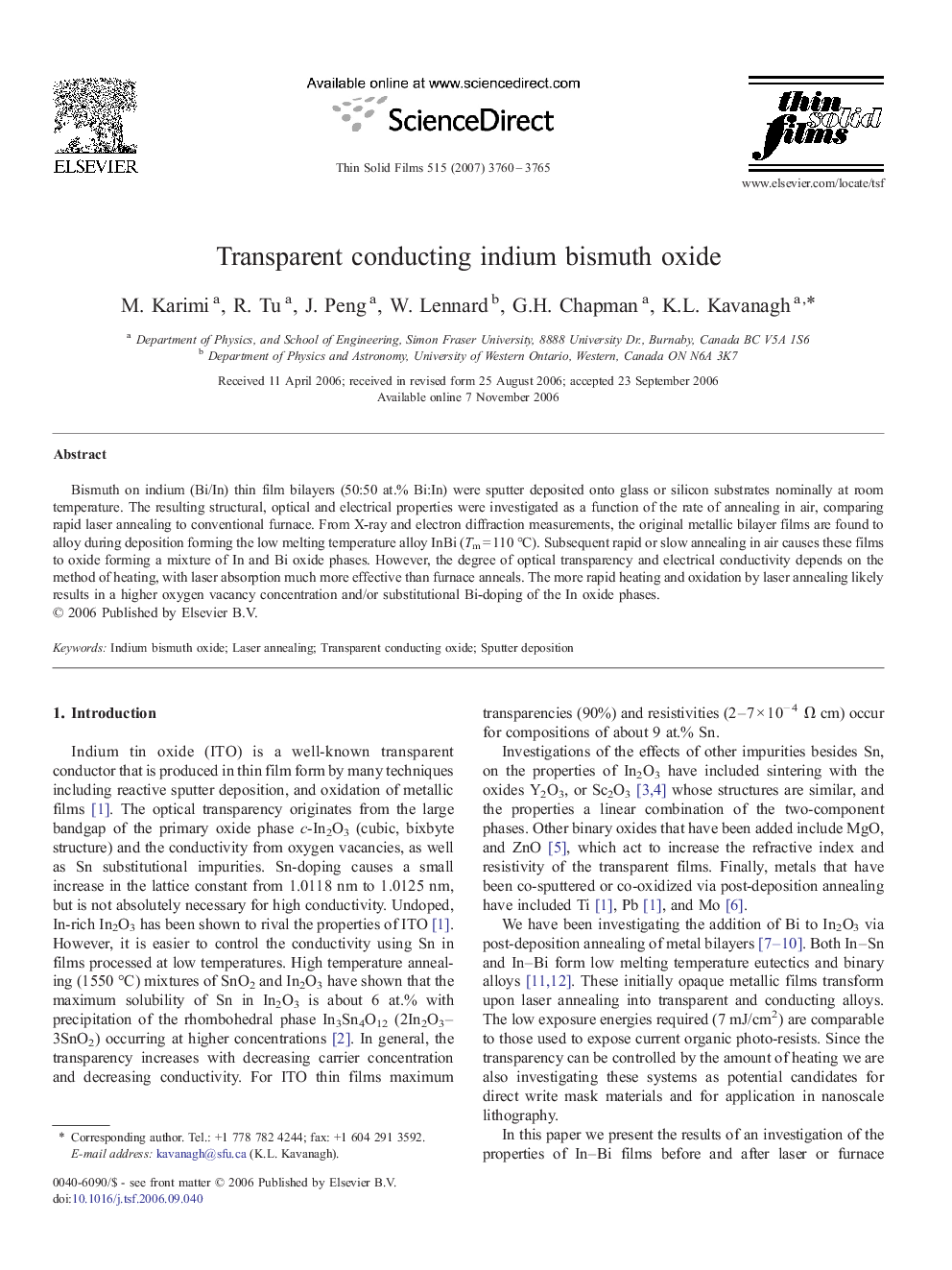| Article ID | Journal | Published Year | Pages | File Type |
|---|---|---|---|---|
| 1673027 | Thin Solid Films | 2007 | 6 Pages |
Bismuth on indium (Bi/In) thin film bilayers (50:50 at.% Bi:In) were sputter deposited onto glass or silicon substrates nominally at room temperature. The resulting structural, optical and electrical properties were investigated as a function of the rate of annealing in air, comparing rapid laser annealing to conventional furnace. From X-ray and electron diffraction measurements, the original metallic bilayer films are found to alloy during deposition forming the low melting temperature alloy InBi (Tm = 110 °C). Subsequent rapid or slow annealing in air causes these films to oxide forming a mixture of In and Bi oxide phases. However, the degree of optical transparency and electrical conductivity depends on the method of heating, with laser absorption much more effective than furnace anneals. The more rapid heating and oxidation by laser annealing likely results in a higher oxygen vacancy concentration and/or substitutional Bi-doping of the In oxide phases.
